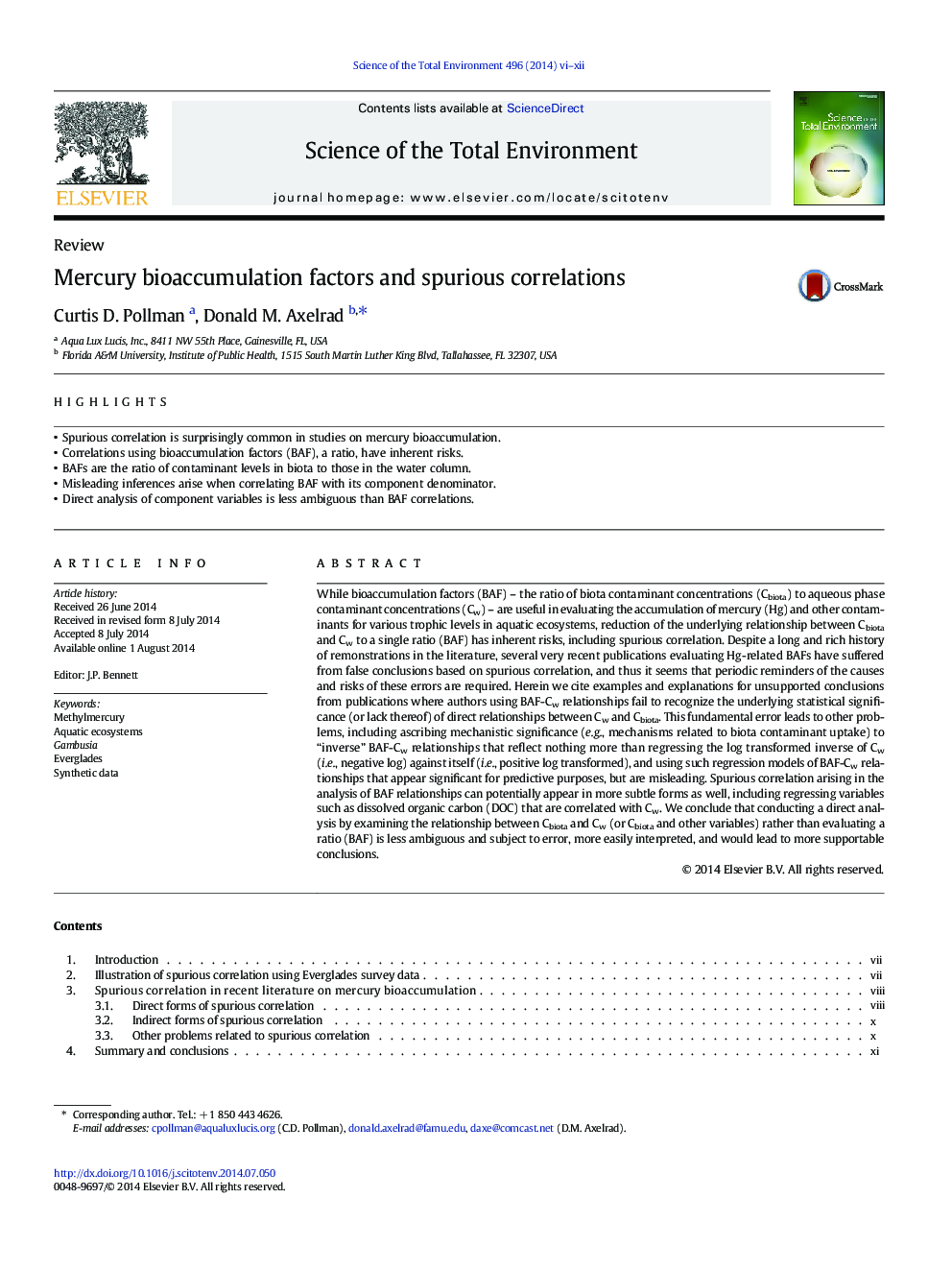| Article ID | Journal | Published Year | Pages | File Type |
|---|---|---|---|---|
| 6329394 | Science of The Total Environment | 2014 | 7 Pages |
Abstract
While bioaccumulation factors (BAF) - the ratio of biota contaminant concentrations (Cbiota) to aqueous phase contaminant concentrations (Cw) - are useful in evaluating the accumulation of mercury (Hg) and other contaminants for various trophic levels in aquatic ecosystems, reduction of the underlying relationship between Cbiota and Cw to a single ratio (BAF) has inherent risks, including spurious correlation. Despite a long and rich history of remonstrations in the literature, several very recent publications evaluating Hg-related BAFs have suffered from false conclusions based on spurious correlation, and thus it seems that periodic reminders of the causes and risks of these errors are required. Herein we cite examples and explanations for unsupported conclusions from publications where authors using BAF-Cw relationships fail to recognize the underlying statistical significance (or lack thereof) of direct relationships between Cw and Cbiota. This fundamental error leads to other problems, including ascribing mechanistic significance (e.g., mechanisms related to biota contaminant uptake) to “inverse” BAF-Cw relationships that reflect nothing more than regressing the log transformed inverse of Cw (i.e., negative log) against itself (i.e., positive log transformed), and using such regression models of BAF-Cw relationships that appear significant for predictive purposes, but are misleading. Spurious correlation arising in the analysis of BAF relationships can potentially appear in more subtle forms as well, including regressing variables such as dissolved organic carbon (DOC) that are correlated with Cw. We conclude that conducting a direct analysis by examining the relationship between Cbiota and Cw (or Cbiota and other variables) rather than evaluating a ratio (BAF) is less ambiguous and subject to error, more easily interpreted, and would lead to more supportable conclusions.
Related Topics
Life Sciences
Environmental Science
Environmental Chemistry
Authors
Curtis D. Pollman, Donald M. Axelrad,
